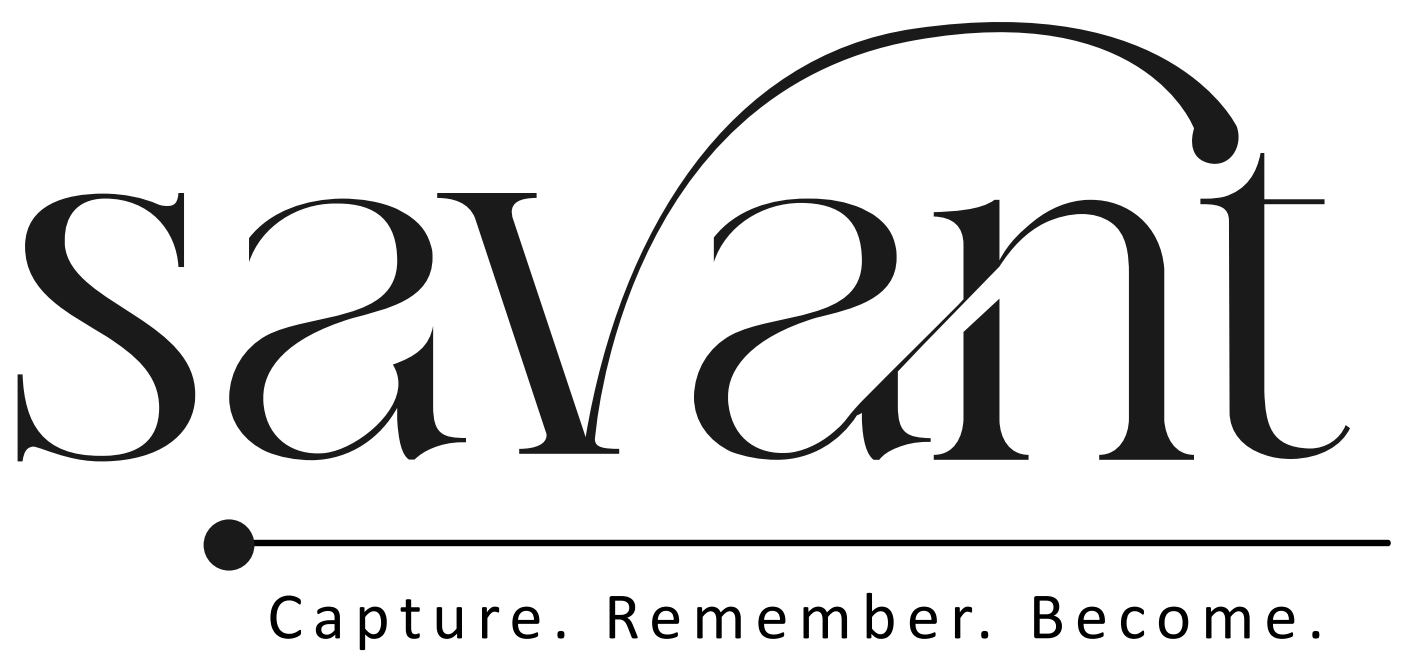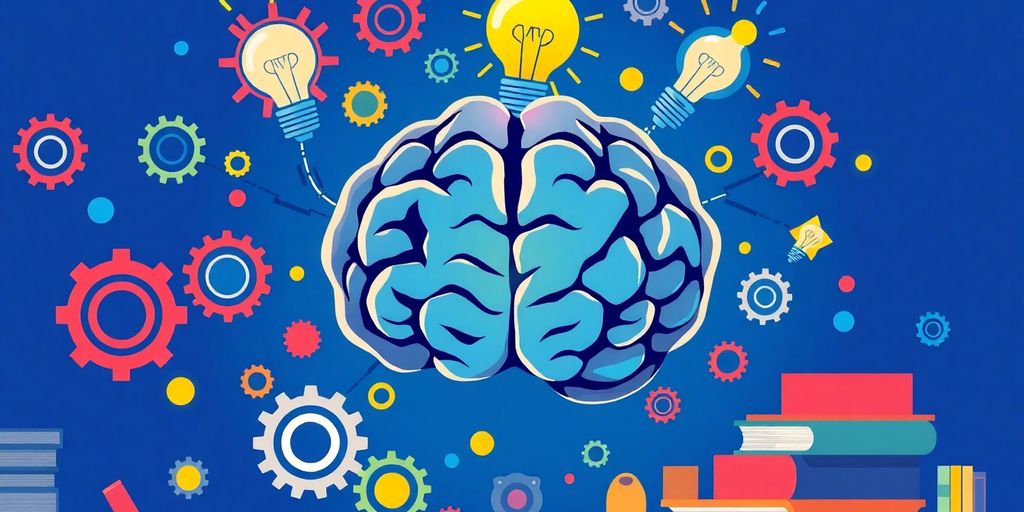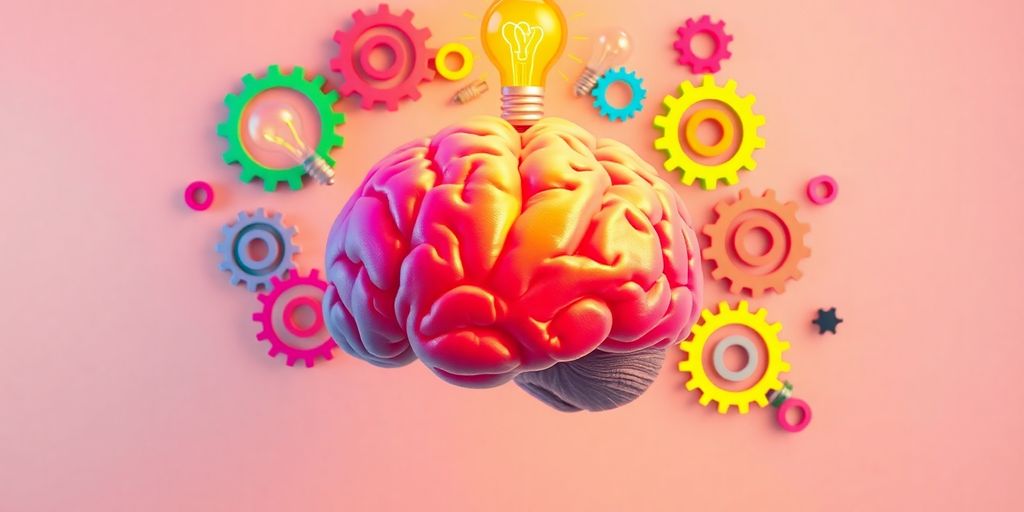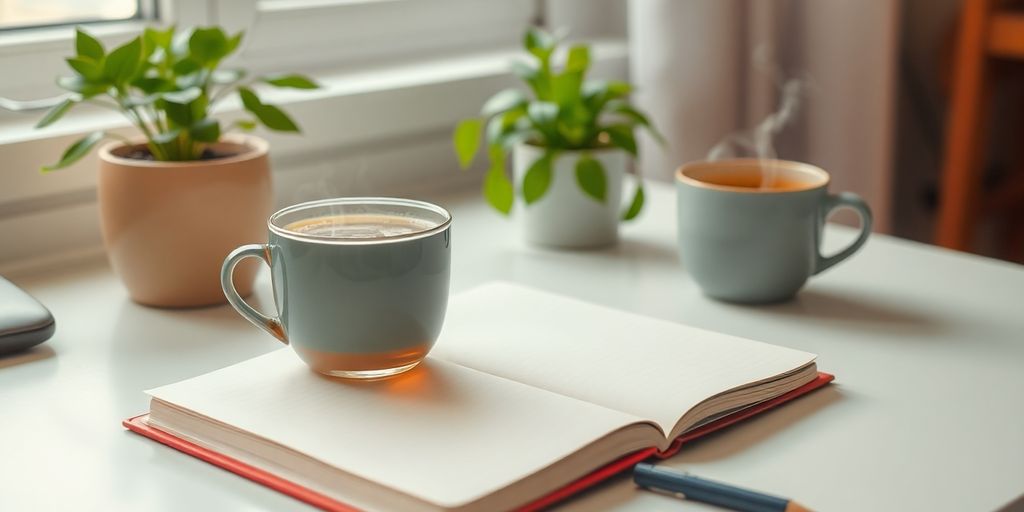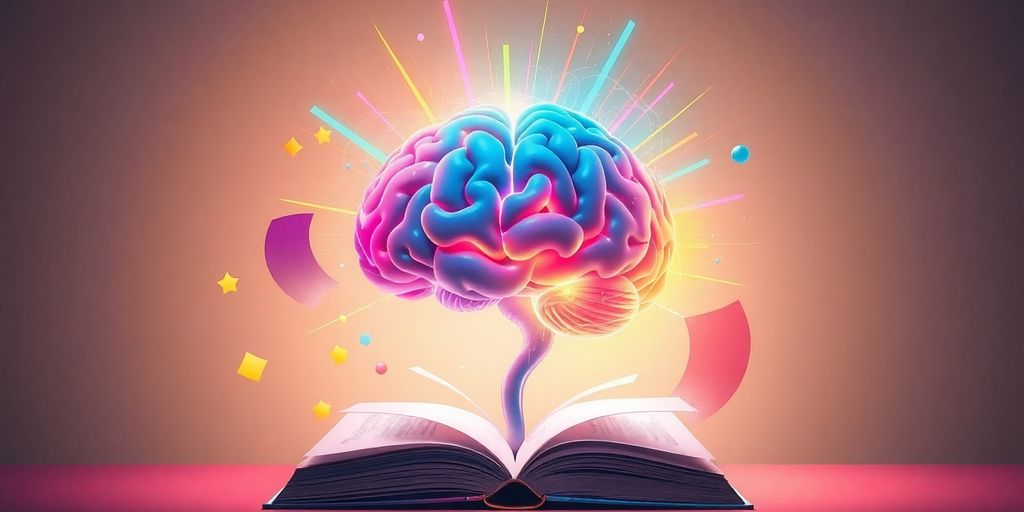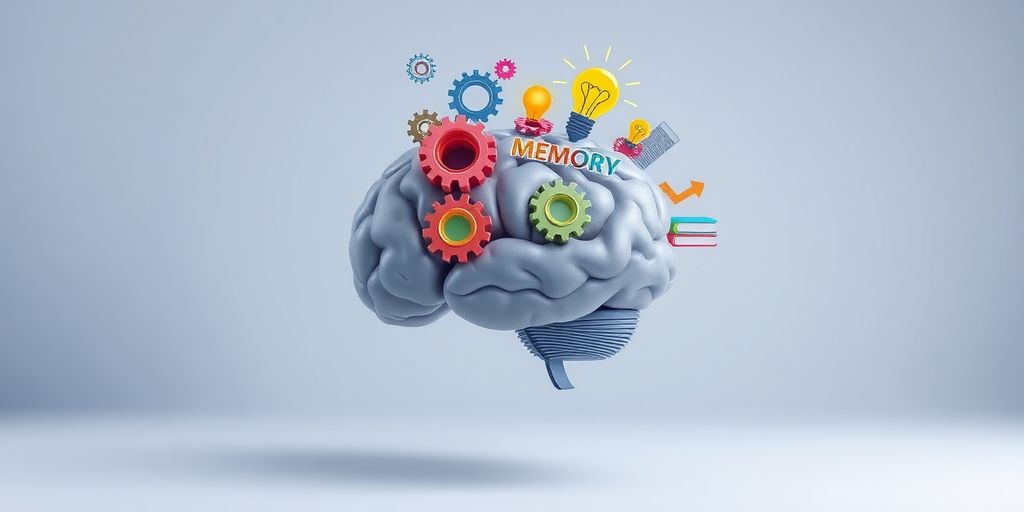Memory is a key skill that influences many aspects of our lives, from school to work and even personal relationships. Enhancing our memory can lead to better results in learning and help us remember important moments. This article will discuss ten effective methods to train your memory, making it easier to learn and recall information throughout your life.
Key Takeaways
- Chunking helps break information into smaller pieces for easier recall.
- The Memory Palace technique uses familiar places to help remember things.
- Spaced repetition reinforces learning by reviewing material over time.
- Active recall involves testing yourself to strengthen memory retention.
- Using visualization and storytelling can make remembering more fun and effective.
1. Chunking
Chunking is a super handy technique that helps you remember things better by breaking down big pieces of information into smaller, more manageable parts. This method makes it easier for your brain to store and recall information! For example, instead of trying to remember a long number like 123456789, you can chunk it into 123-456-789. This way, it’s much simpler to remember.
What is Chunking and How Can It Improve Memory?
The chunking technique is a memorization method that begins with distilling large pieces of information into smaller pieces or chunks. This makes it easier for your brain to process and remember.
Why Does Chunking Work?
Research shows that our brains can typically hold onto about seven pieces of information at once. This idea is known as "The Magical Number Seven, Plus or Minus Two." So, when you chunk information, you’re helping your brain work within its limits!
How to Use Chunking Effectively
Here are some tips to make chunking work for you:
- Identify Related Information: Group similar items together. For example, if you’re trying to remember a grocery list, group items by category (fruits, vegetables, dairy).
- Use Patterns: Look for patterns in the information. For instance, if you’re memorizing a sequence, see if there’s a rhythm or rhyme.
- Practice Regularly: The more you practice chunking, the better you’ll get at it. Try it out with different types of information!
Remember, chunking is like giving your brain a helping hand. By breaking things down, you can make learning and remembering a lot easier!
2. Memory Palace Technique
The Memory Palace technique is a fun and creative way to remember things! It helps you link information to specific places you know well. This method is great for recalling lists, like groceries or study notes.
How It Works
- Choose a familiar place: Think of a location you know well, like your home.
- Visualize items: As you mentally walk through this place, imagine placing the items you want to remember in different rooms.
- Recall by walking through: When you need to remember, just take a mental stroll through your palace and see each item.
Why It’s Effective
- Visual Memory: Our brains are wired to remember images better than words.
- Spatial Awareness: We naturally remember locations, making it easier to retrieve information.
- Engagement: Creating a memory palace keeps you involved and makes learning fun!
Remember, the more vivid and silly your images, the easier it will be to recall the information later!
Using the Memory Palace technique can really change how you study and remember things. So, why not give it a try? You might be surprised at how much you can remember!
3. Spaced Repetition

Spaced repetition is a smart way to help you remember things better. Instead of cramming all your studying into one night, you spread it out over time. This method takes advantage of how our brains work, making it easier to keep information in your long-term memory. The key is to review material just before you’re likely to forget it.
How It Works
- Initial Learning: Start by learning the new information.
- First Review: Review it after a short time, like one day later.
- Subsequent Reviews: Gradually increase the time between reviews, like three days, then a week, and so on.
Benefits of Spaced Repetition
- Better Memory Retention: Spacing out your study sessions helps reinforce what you’ve learned.
- Less Stress: Regular reviews can reduce the need for last-minute cramming, making studying feel less overwhelming.
- Deeper Understanding: Revisiting concepts allows you to connect new information with what you already know.
Tools for Spaced Learning
To make the most of spaced repetition, consider using:
- Flashcards: Great for quick reviews and can be spaced out over time.
- Apps: Many educational apps are designed to help you schedule your study sessions effectively.
- Study Groups: Collaborating with friends can make repetition more engaging and fun.
Remember, learning is a journey, not a race! Take your time and enjoy the process.
4. Active Recall
Active recall is a fantastic way to boost your memory! Instead of just reading your notes or highlighting text, you actually test yourself on what you’ve learned. This method helps strengthen your memory pathways, making it easier to remember information later. The more you practice, the better you’ll get!
Benefits of Active Recall
- Improved Memory: Actively retrieving information helps you remember it longer.
- Better Understanding: You grasp concepts more deeply when you engage with the material.
- Confidence Boost: The more you practice, the more confident you become in your knowledge.
Practical Tips for Using Active Recall
Here are some fun ways to incorporate active recall into your study routine:
- Use Flashcards: Create flashcards with questions on one side and answers on the other. Test yourself regularly!
- Practice Self-Quizzing: After studying a topic, close your notes and write down everything you remember.
- Teach Someone Else: Explaining concepts to others can reinforce your understanding and memory.
Active recall is like a workout for your brain. The more you practice, the stronger your memory gets!
By using these techniques, you can make active recall a regular part of your learning process, leading to improved memory and focus!
5. Visualization
Visualization is a powerful tool that can help you remember things better. By creating mental images, you can make information stick in your mind. This technique can boost your concentration and make studying more enjoyable! Here are some fun ways to use visualization:
- Create Mental Images: Picture what you want to remember. For example, if you need to recall a grocery list, imagine each item in your kitchen.
- Make Connections: Link new information to something you already know. This helps create a stronger memory pathway.
- Use Mind Maps: Draw diagrams that connect ideas visually. This can help you see the bigger picture and remember details better.
| Technique | Description |
|---|---|
| Mental Images | Picture items or concepts in your mind. |
| Connections | Relate new info to what you already know. |
| Mind Maps | Visual diagrams that organize thoughts. |
Remember, improving your memory is a journey! By trying out these techniques, you can find what works best for you and make learning more enjoyable.
Also, visualization techniques can help you improve focus during study sessions by helping you create a mental environment conducive to learning. So, get creative and start visualizing your way to success!
6. Mind Mapping
Mind mapping is a fun and creative way to organize your thoughts visually. It helps you see connections between ideas and makes remembering details easier! Here’s how to create a mind map:
- Start with a central idea in the middle of a page.
- Branch out with related topics, using lines to connect them.
- Add colors and images to make it more engaging.
This technique not only boosts your memory but also makes learning more enjoyable. Here are some benefits of mind mapping:
- Improves recall of information.
- Helps in understanding complex concepts.
- Makes learning more interactive and fun.
By using mind mapping, you can unlock your potential and enhance your memory skills. Remember, the more you practice, the better you’ll get!
How to Start Mind Mapping
To get started with mind mapping, follow these simple steps:
- Write your main idea in the center.
- Draw branches for subtopics.
- Add keywords or images to each branch.
This method helps you visualize your ideas and see how they connect, making it easier to remember details later.
Tools for Mind Mapping
There are many tools available to help you create mind maps. Here are a few popular ones:
- MindMeister: Great for online collaboration.
- XMind: Offers various templates.
- Coggle: Simple and user-friendly.
Tips for Effective Mind Mapping
- Use different colors for branches to make it visually appealing.
- Keep it simple; don’t overcrowd your map.
- Review and update your mind maps regularly to reinforce your memory.
By incorporating mind mapping into your study routine, you can enhance your learning experience and make remembering information a breeze!
7. Flashcards
Flashcards are a super handy tool for boosting your memory! They help you actively recall information, which is key to remembering better. Here’s how to make the most of them:
1. Create Your Own Flashcards
- Writing things down helps you remember better.
- Use different colors and fonts to make them visually appealing.
- Include images or diagrams to engage your visual memory.
2. Use Spaced Repetition
- Review your flashcards at increasing intervals. For example:
- Day 1: Study new cards
- Day 3: Review cards you know well
- Day 7: Go over the tricky ones again
3. Mix It Up
- Shuffle your flashcards often to keep your brain on its toes.
- Try using apps like Anki or Quizlet for digital flashcards that can help automate your study schedule.
Remember, the more senses you engage while learning, the better you’ll remember! So, don’t just read—see, hear, and do whenever you can!
8. Storytelling
Storytelling is a powerful way to boost your memory. Using stories to remember facts can make learning fun and effective! When you create a narrative, you connect different pieces of information, making it easier to recall them later. Here’s how you can use storytelling to enhance your memory:
- Create a Narrative: Turn the information you want to remember into a story. The more vivid and imaginative, the better!
- Use Characters: Assign characters to the facts you need to remember. This makes it easier to visualize and recall.
- Add Emotions: Incorporate feelings into your story. Emotional connections help strengthen memory retention.
Remember, the more creative and exaggerated your story, the easier it will be to remember the details!
Here’s a quick example of how storytelling can work:
| Fact | Story Element |
|---|---|
| The Earth revolves around the Sun | A brave astronaut exploring the solar system |
| Water freezes at 32°F | The astronaut encounters a frozen lake on a distant planet |
| The heart pumps blood | The astronaut’s heart races as they discover new worlds |
By linking facts through a story, you can make learning enjoyable and memorable. So next time you need to remember something, try weaving it into a story!
9. Mnemonics
Mnemonics are clever tricks that help you remember information more easily. They can be fun and creative! Here are some popular types of mnemonics:
Types of Mnemonic Devices
- Acronyms: Create a word using the first letters of what you need to remember. For example, "HOMES" stands for the Great Lakes: Huron, Ontario, Michigan, Erie, and Superior.
- Rhymes: Make a catchy rhyme to help recall facts. For instance, "Thirty days hath September, April, June, and November…" helps you remember which months have 30 days.
- Visual Images: Picture something vivid in your mind. For example, to remember the name "Rosa Parks," imagine a woman sitting on a park bench surrounded by roses.
How to Create Your Own Mnemonics
Creating your own mnemonics can be fun! Here’s how:
- Think of a word or phrase that relates to what you want to remember.
- Use humor or vivid imagery to make it memorable.
- Practice recalling the mnemonic to strengthen your memory.
Examples of Effective Mnemonics
- To remember the colors of the rainbow, think of "ROY G. BIV" (Red, Orange, Yellow, Green, Blue, Indigo, Violet).
- For the order of operations in math, use the phrase "Please Excuse My Dear Aunt Sally" (Parentheses, Exponents, Multiplication, Division, Addition, Subtraction).
Using mnemonics not only makes learning more enjoyable but also helps you remember things better! So, get creative and start using these fun techniques!
10. Neuroplasticity
Neuroplasticity is the brain’s incredible ability to change and adapt. This means you can actually improve your memory and learning skills at any age! By understanding how your brain works, you can take steps to make it even better.
Exercises to Stimulate Brain Growth
To leverage the power of neuroplasticity for personal development, try these fun activities:
- Learn a new instrument
- Take up a new sport
- Try puzzles or brain games
- Join a dance class
Benefits of a Flexible Brain
Having a flexible brain can lead to better memory, improved problem-solving skills, and even a happier mood. When you challenge your brain, you create new pathways that help you learn and remember better.
Remember, just like muscles, your brain needs regular workouts to stay strong!
The Role of Sleep in Memory Improvement
Good sleep is crucial for memory retention. Prioritize quality sleep and consider naps to help your brain recharge and process information effectively.
Key Takeaways
- Neuroplasticity allows your brain to adapt and grow; challenge it regularly with new skills.
- Good sleep is crucial for memory retention; prioritize quality sleep and consider naps.
- Using spaced repetition and active recall techniques can significantly improve your learning.
Highlight
The major difficulty that elderly people have in learning is due to a deterioration of brain function, causing a progressive weakening of concentration, memory, and other cognitive skills. Neuroplasticity offers hope, showing that with the right practices, anyone can enhance their brain’s capabilities, regardless of age!
Wrapping It Up: Your Memory Journey
So, there you have it! Boosting your memory isn’t just a dream; it’s totally possible with the right techniques. By using fun methods like flashcards, stories, and even visual tricks, you can make remembering things a piece of cake. Remember, it’s all about practice and finding what works best for you. Don’t hesitate to mix things up and keep it exciting! With a little effort, you’ll be amazed at how much you can remember. So go ahead, unleash your inner memory master and enjoy the journey!
Frequently Asked Questions
What are some easy methods to improve my memory?
You can boost your memory by using techniques like visual images, making connections between ideas, and practicing regularly.
How does spaced repetition benefit memory?
Spaced repetition means reviewing information at increasing intervals, which helps move knowledge from short-term to long-term memory.
What is the Memory Palace technique?
The Memory Palace technique involves visualizing a familiar place and associating items you want to remember with specific locations in that place.
Why is active recall important for memory?
Active recall is when you test yourself on what you’ve learned, which makes your memory stronger and helps you remember better.
Can technology assist in improving my memory?
Yes! There are apps that use multimedia flashcards and spaced repetition to make studying more effective and engaging.
What should I do if I have trouble visualizing things?
If you find it hard to create mental images, try using other senses or methods that don’t rely on visualization, like verbal associations.
